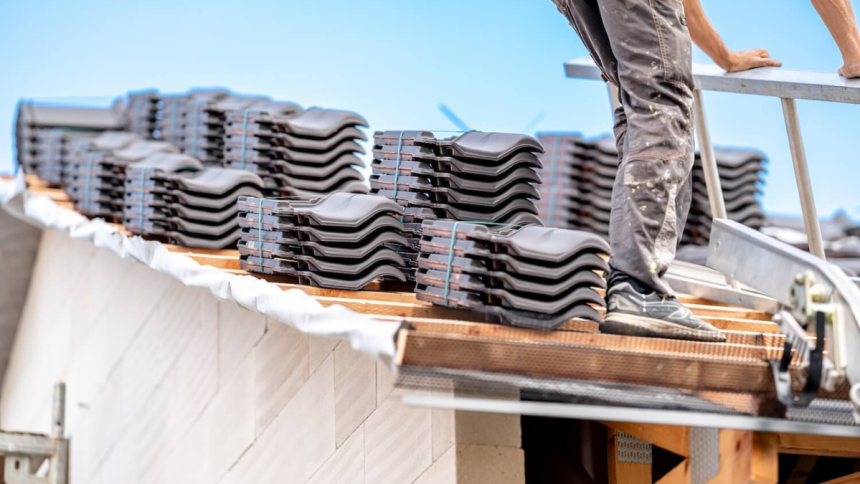A few loose shingles. A small leak near the attic. A quick repair, then another. It’s easy to keep patching your roof until you’ve lost count of how many times you’ve called someone out.
It seems practical—until it isn’t.
While roof repair can solve isolated issues, it’s often a temporary fix for a much larger, slower-moving problem. For many homeowners, the choice to delay roof installation or full roof replacement isn’t about ignorance—it’s about budgeting, convenience, and the belief that “just one more fix” will hold everything together.
But the numbers don’t always agree. What starts as smart maintenance can slowly evolve into an inefficient cycle of patchwork that drains more money, energy, and peace of mind than most people realize.
Here’s what’s really at stake when you postpone the inevitable—and how a strategic shift from short-term repair to long-term performance can change everything.
The Allure of the Quick Fix
There’s a reason roof repair feels easier to justify. It’s immediate. It’s cheaper in the moment. It addresses the visible issue and keeps everything moving forward.
But most residential roofing systems are built to last 20–30 years at most. When repairs become more frequent and start spreading to multiple areas of the roof—flashing, decking, ventilation, shingles—you’re no longer maintaining. You’re postponing.
And postponement has a price.
For instance, water intrusion from a minor leak may not seem urgent, but the cost of moisture-related damage compounds quickly. Rotting wood, mold remediation, insulation loss—these often cost more than the original repair.
Choosing to delay roof installation when a roof is near the end of its life can turn a controlled project into an emergency replacement, often under poor weather conditions or when damage has already spread to other parts of the home.
Cost Over Time: Repair vs. Replacement
Let’s do the math.
Imagine spending $800 a year on various roof repairs: sealing around vents, replacing missing shingles, addressing small leaks. Over five years, that adds up to $4,000—and that’s assuming no major damage occurs during that time.
Now compare that to a well-timed roof replacement that costs, for example, $10,000. While that number may feel steep upfront, it typically includes full material updates, underlayment improvement, and labor warranties. More importantly, it resets the clock—adding decades of reliability and reducing your annual roofing costs to nearly zero.
Roof installation isn’t just a project. It’s an investment in stability. And when you calculate long-term maintenance, energy efficiency, and potential home value increases, that investment starts to look more strategic than expensive.
The Hidden Toll on Energy and Efficiency
An aging roof doesn’t just leak water—it leaks performance.
As shingles deteriorate and ventilation becomes less effective, your HVAC system is forced to compensate. Heating and cooling become inconsistent. Energy bills creep higher. Rooms feel drafty in winter and stifling in summer.
New residential roofing systems are built with these concerns in mind. Ventilation, insulation compatibility, and reflective materials all contribute to a more efficient building envelope. Roof replacement becomes a way to control indoor climate—not just fix what’s broken.
In places like East Detroit, where seasons swing from bitter cold to humid heat, roofing plays a frontline role in maintaining home comfort. Ignoring roof performance means resigning yourself to discomfort—and higher bills—for years at a time.
The Emotional Cost of Uncertainty
There’s also an intangible toll that often gets overlooked: the stress of not knowing when your roof might fail.
Every storm brings worry. Every ceiling stain raises a question. Every new leak feels like a surprise—even though the signs have been there for years.
When you’re stuck in repair mode, your roof becomes a source of anxiety. When you finally shift to full roof installation, that anxiety disappears. The structure above your head no longer demands attention. It protects, quietly and reliably, the way it’s supposed to.
This kind of mental relief isn’t found on a balance sheet—but most homeowners feel the difference immediately after making the switch.
Home Value and Resale Considerations
If you’re planning to sell your home within the next five years, roof replacement becomes even more important.
Buyers don’t want a roof that needs work. They don’t want uncertainty, and they don’t want to negotiate repairs after inspection. A new roof, on the other hand, is a powerful selling point. It increases perceived value, reduces friction in negotiations, and can speed up closing timelines.
Real estate professionals often cite roof condition as one of the top five factors that influence buyer decisions. Even if the rest of your home is updated, a deteriorating roof can drag down offers—or push potential buyers toward a competitor’s listing.
For many East Detroit homeowners, scheduling roof replacement before listing the property becomes a smart pre-sale strategy, not just a maintenance move.
Timing Is Leverage
There’s a significant advantage to replacing a roof on your schedule—rather than waiting for it to demand attention. Planning ahead gives you:
- Flexibility in choosing contractors
- Better pricing during off-peak seasons
- Time to explore materials and warranties
- Control over interior protection during replacement
When the decision is yours, not your roof’s, everything goes more smoothly. Emergencies don’t offer that kind of courtesy.
Professionals like Best Choice Roofing of East Detroit often work with homeowners who regret waiting too long. For them, the urgency always seems to arrive at the worst time—after a storm, in the middle of winter, or just before a family event.
Taking action before urgency sets in isn’t just smart—it’s empowering.
Final Thought: The Real Cost of Waiting
It’s easy to see roof replacement as the expensive option. But viewed through the lens of time, energy, and total value, the opposite often proves true.
Roof repair is important and appropriate in many cases—but when it becomes routine, it’s time to ask whether you’re investing in your home’s future or just delaying the inevitable.
Because your roof isn’t just a structure. It’s the capstone of your home’s integrity, efficiency, and livability.
And when you finally stop patching and start planning, you’ll realize that peace of mind isn’t found in sealing another leak—it’s found in starting fresh.
Lynn Martelli is an editor at Readability. She received her MFA in Creative Writing from Antioch University and has worked as an editor for over 10 years. Lynn has edited a wide variety of books, including fiction, non-fiction, memoirs, and more. In her free time, Lynn enjoys reading, writing, and spending time with her family and friends.















